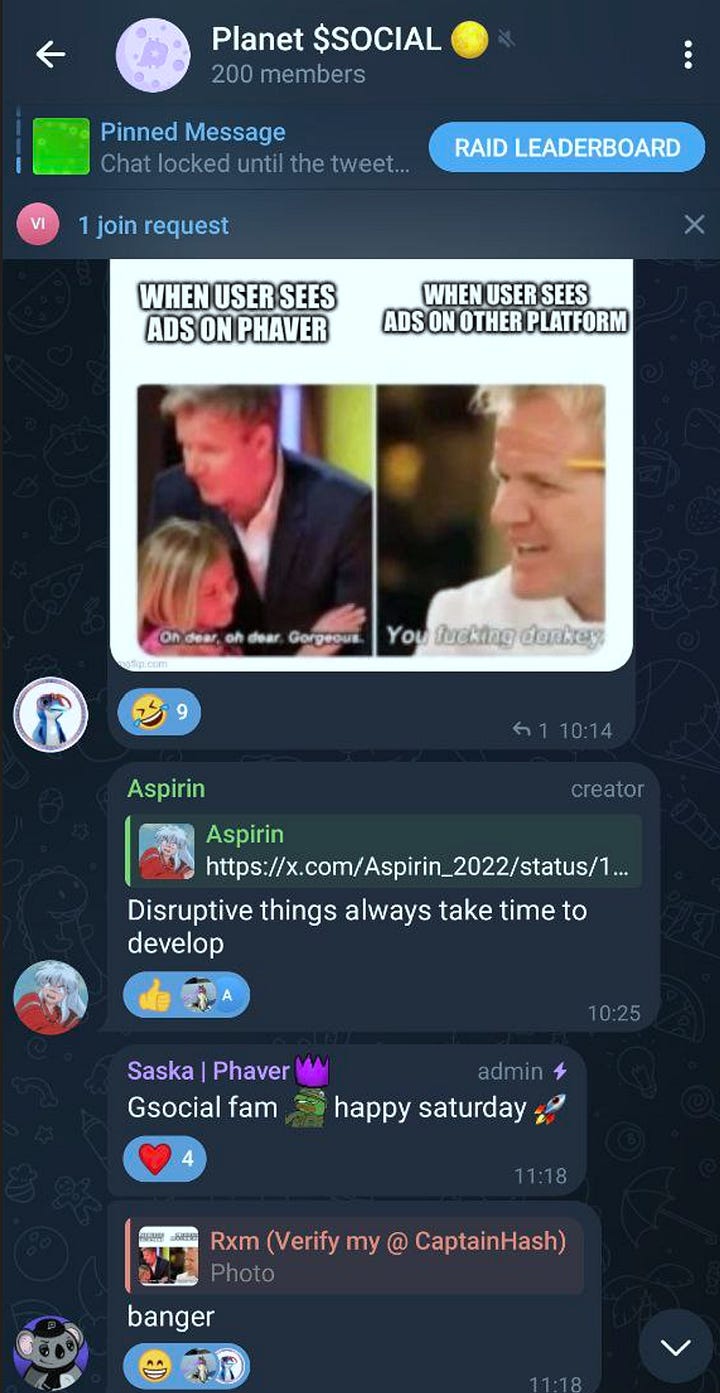Onchain social ads are here
Phaver and Spindl are putting ads in feed, and users love it
Like many successful products, News Feed Ads rode to success atop a tsunami-esque wave nobody had predicted, or at least hadn’t predicted to arrive right then and so quickly.
Chaos Monkeys (2016)
The unique affordances of the blockchain—user-owned identity, natively-integrated payment rails, permissionless data sharing—open up utterly new user experiences that Web2 social would be at pains to replicate.
Embedded experiences like Telegram mini-apps, Farcaster frames, and Solana Blinks would be almost impossible to engineer on Facebook, Instagram, or Twitter: You just can’t run app A inside app B in any real way, and Web2 has to settle for hacks like triggering Apple Pay from TikTok in order to transact (a flow that recalls mobile wallet transactions).
The Farcaster protocol’s shared data means also that suddenly a user’s data is unlocked across social apps, not to mention the onchain transaction record from any linked wallets. All in all, onchain social will be an absolute godsend for Web3 growth and marketing, as impactful in crypto as Facebook and Instagram Feed ads were for mobile apps and ecommerce.
This is what the future of onchain advertising actually looks like: natively-onchain consumer apps, with users benefitting from sponsored offers from other relevant crypto projects, all of it inside an open and measurable growth flywheel.
Today we’re announcing that Farcaster and Lens social app Phaver is joining Spindl’s growing onchain ad network, bringing 300,000 connected wallets and 100,000 MAU to our growing inventory of fully wallet-aware consumer apps like Rainbow and Collab.land. As you can uniquely see via the Spindl Audiences tool below, the Phaver audience has been responsible for over $314 million in onchain volume in the past 90 days. The app’s users skew heavily to DEX trading and yield farming, holding lots of wֵETH and BNB, a prime audience for DeFi advertisers.

Using Spindl’s wallet-based targeting, advertisers can target arbitrarily precise wallet audiences, getting their message in front of the actual wallet holders who’ve connected to Farcaster with those wallets (not some fuzzy and unreliable Web3 to Web2 join that’s probabilistic at best, and non-existent at worst).
Very uniquely, Phaver is using its ad revenue to buy back its $SOCIAL token, passing part of the advertising upside to its token-holding users. This aligns nicely with the Spindl vision around onchain advertising: Not only can the blockchain serve as the ultimate attribution source for marketing campaigns, it can facilitate a value transfer back to users in the form of rebates, bounties, and value-increasing token buybacks.


Thus far, the user reaction has been extraordinarily positive, with the high-quality ads fitting in nicely with organic content (the bump to the $SOCIAL token is also appreciated).
This is what the future of onchain advertising actually looks like: consumer apps that are natively onchain, with users benefitting from sponsored offers from other relevant crypto projects, all of it inside an open and measurable growth flywheel. In the same way that stablecoins are better than bank transfers or credit cards for both merchants and users, we’ll soon see how onchain ads produce all-around better consumer experiences for both users and advertisers in ways Web2 couldn’t have imagined.
If you’re a publisher or advertiser looking to work with Spindl, hit us up.
For more news on the cutting edge of Web3 marketing tech:



